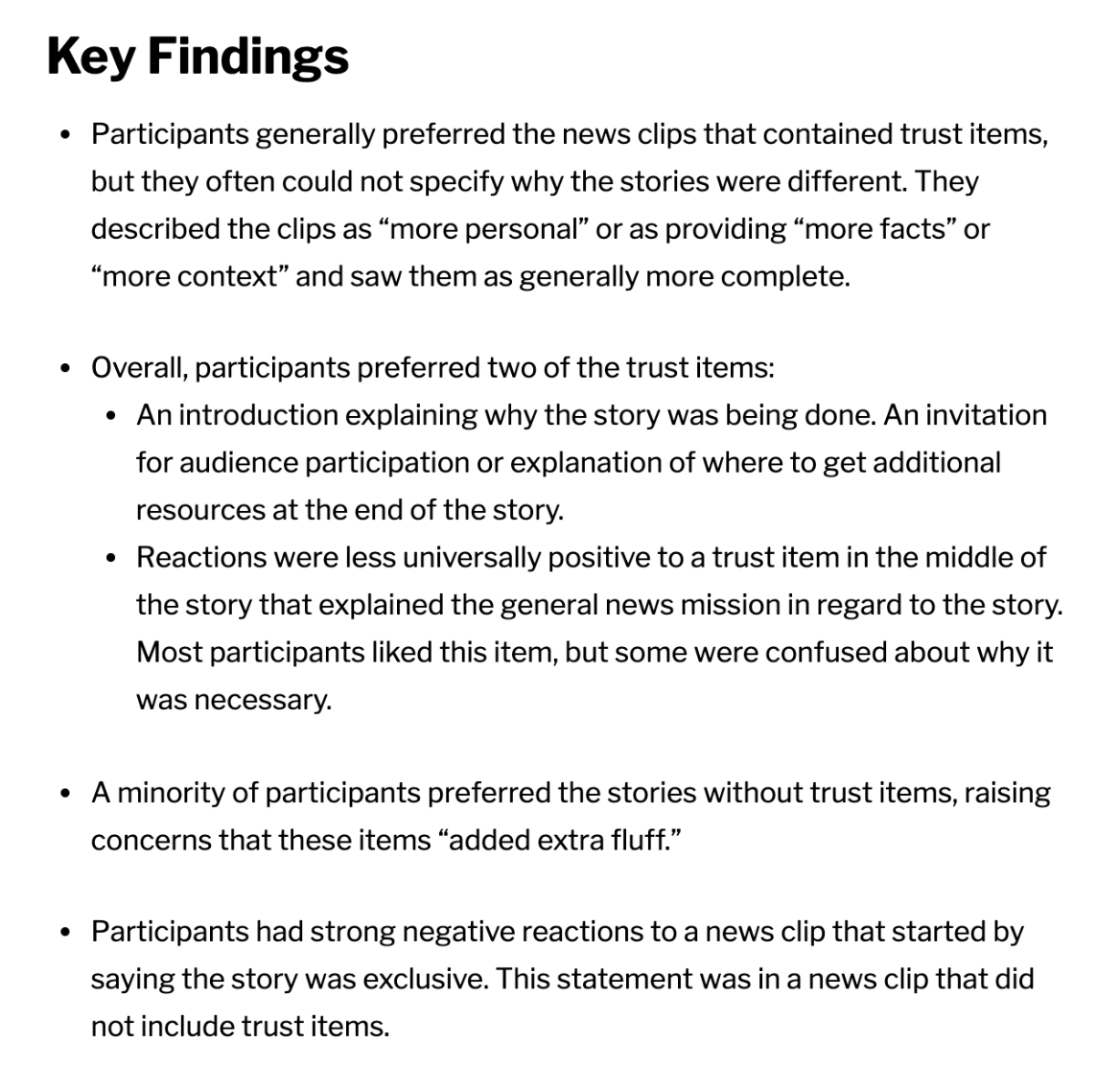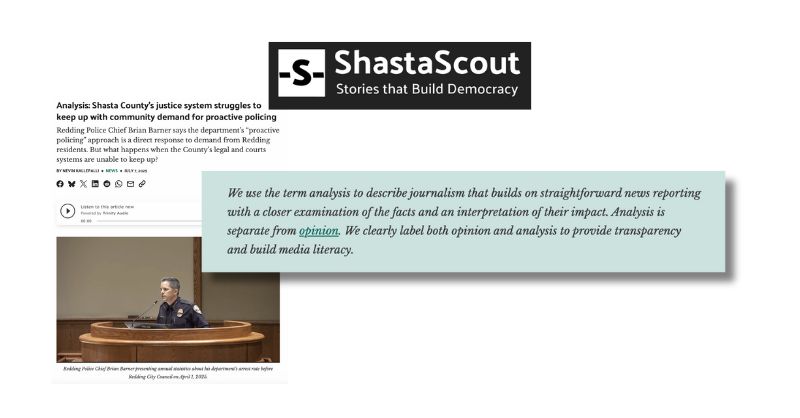
More people get news from TV than from radio or print. And when it comes to access to news across diverse communities, it’s also true that local TV is more preferred by people of color in the U.S. than newspapers or digital-first local news. It’s free, and it’s widely available. Thanks to research, we know TV newsrooms can […]
Add transparency on air in these 4 ways
More people get news from TV than from radio or print. And when it comes to access to news across diverse communities, it’s also true that local TV is more preferred by people of color in the U.S. than newspapers or digital-first local news. It’s free, and it’s widely available.
Thanks to research, we know TV newsrooms can build trust by incorporating transparency into their work.
But with the fast-paced environment of news and tight deadlines, it might be hard to imagine how to fit transparency language in. As we have worked with local TV and radio stations, we have kept this top of mind and have found adding trust elements to on-air content works best by using the following four strategies.
4 places to add transparency elements
1. Including in an anchor or reporter intro. Intros to stories are often elements that can be changed or finalized as the deadline for airing looms closer. Because of this, they can be a good place to insert transparency language and explain your reporting process. They can also be a great place to answer questions like:
- Why did you choose to cover this story?
- What are your goals in covering this story? What do you want your community to take away?
- How did you approach gathering information for this story? How did you try to represent diverse viewpoints?
2. Including an anchor or reporttag. Similar to the intro for a story, a tag also can potentially be changed or finalized closer to airtime. Tags often have the added benefit of being a good place to include a full screen where you can provide more information about where people can go for more information on the topic, how they can get help if they find themselves in a similar situation, how they might contribute to solutions or get involved in the conversation and sharing links to your expanded coverage or policies.
3. Creating a cross-talk or Q&A. Instead of just having some of the information above be part of the scripts for intros or tags, you could also provide an opportunity for the anchor and reporter to discuss story goals, ethics and reporting process by having a conversation or asking one another questions. This format allows the tone to be very personable and conversational.
4. Creating videos for social media. Consider having the reporter, anchor or producer explain why a story was done, what you hope to achieve with a story, or any other ethics or reporting process elements in a selfie-style video for social media. You could also produce it more with graphics and text on screen, but to make it easier to produce, having someone explain these topics and answer questions on camera can be just as effective. They can do this on the newsroom account or their own and this is a way for any news organization to explore using video to earn trust. Kristyn Hartman (former WCPO anchor) did this often on Facebook. A couple of examples can be found here and here.
>> Want more tips and guidance? Check out our new Trust Kit: Building trust on air.
We know it works!
Again, the research shows these approaches to building trust work.
Through a series of focus groups, Trusting News and the Center for Media Engagement found TV newsrooms can build trust with their audiences by explaining why a story is covered, providing additional resources at the end of stories and inviting audience participation. Read the full research report here, and see a snippet of the research below.

So, what does this really look like? Let’s look at a script for one of the stories we tested. (You can read the scripts for all of the stories here.) The highlighted text is what was added by Trusting News.

What we added
- More details about the 911 call. We added more transparency to the story by getting more specific about how WCPO knew about the allegations of abuse (they were reported in a 911 call) and describing what was said on the call. We also added that WCPO staff verified the information by listening to the call. Explaining that you verified information and where it came from can help fight skepticism.
- Connected the decision to not air the audio to the station’s ethics. By specifically mentioning why the station is not airing the audio from the 911 call you remind people you have ethics that guide your decisions (people don’t assume this). We also added language that was specific about what ethical considerations and questions were debated and how they connected to the community: the ethical concern of protecting privacy, etc. People want to know you have ethics but if you can explain how those ethics protect or benefit them, the community members, you’re able to make the connection to how you are thinking about them and best serving them.
- The station has policies guiding these decisions. Explaining that your newsroom has policies in place to guide your decisions and help you be consistent shows you take care and work to be fair. In this story, we mention the station’s ethics policies and policies related to covering crime. Sending people to view those policies demonstrates your desire to be transparent and share them with your community.
When approaching adding trust to video or audio news content, remember part of what makes it so effective is people are hearing and seeing an actual person talk to them about how they work to be fair, ethical and consistent. Also, because audio and video storytelling tend to allow for more casual and personable language, it’s a format that can make these trust-building techniques even more effective.
People trust people they know or feel like they know. By seeing and hearing you, they are likely to feel more connected to you compared to just reading something you’ve written or seeing your staff bio and photo.
| At Trusting News, we learn how people decide what news to trust and turn that knowledge into actionable strategies for journalists. We train and empower journalists to take responsibility for demonstrating credibility and actively earning trust through transparency and engagement. Learn more about our work, vision and team. Subscribe to our Trust Tips newsletter. Follow us on Twitter and LinkedIn. |

Assistant director Lynn Walsh (she/her) is an Emmy award-winning journalist who has worked in investigative journalism at the national level and locally in California, Ohio, Texas and Florida. She is the former Ethics Chair for the Society of Professional Journalists and a past national president for the organization. Based in San Diego, Lynn is also an adjunct professor and freelance journalist. She can be reached at lynn@TrustingNews.org and on Twitter @lwalsh.



